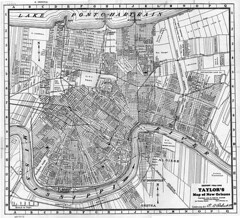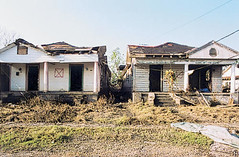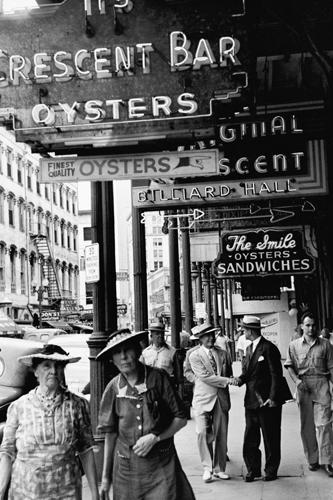More New Orleans...

1. Richard Moe, President of the National Trust for Historic Preservation, was interviewed by the Architectural Record:
ARCHITECTURAL RECORD: During Katrina and Rita,many historic buildings were damaged. Where are you focusing your preservation efforts? Richard Moe: We’re trying to save buildings that are in National-registered Districts. These contain 37,000 historic structures in New Orleans. We’re not going to neglect anything, but that’s where we’re focused. There are 20 National Historic Districts in New Orleans. The French Quarter and Garden District are only two of these. The majority of the rest are vernacular houses with Creole cottages and Craftsman bungalows. These are the heart and soul of New Orleans.
 From Metropolis Magazine.
From Metropolis Magazine. AR: What can you do to make sure more historic buildings are saved? RM: We’re asking Congress to appropriate $60 million for a grant program, to be administered through state historic preservation offices, to help people pay for rehabilitation. There’s a desperate need for this, because many can’t afford to rebuild. We will know about that sometime in December. We would like to raise several million dollars to do the same thing. We are also going to undertake a demonstration program, rehabilitating a half dozen homes across the city to show how it can be done. In the meantime we’re trying to give people as much information on mold remediation and other issues. We have guidelines posted on our web site. It can work. A woman in South Lakeview saw our web site and saved her house. She’s going to move back. The majority of buildings can be cleaned out and saved. Drywall and insulation needs to be ripped out and it has to be ventilated. It will be mostly cleanup; not a lot of demolition. Still, 2,000 homes have been red-tagged for demolition already, although I don’t know how many are historic.
AR: How do you protect New Orleans’ buildings in the future? RM: You have to build stronger levees. No one’s talking seriously about moving the bulk of the city away from where it is now. It’s not realistic.
AR: How do you convince the government to spend more on preservation? RM: New Orleans would not be New Orleans without its architecture. This is why tourists come to the city.
AR: But some say tourists only go to the French Quarter and Garden District. Why not just save those? RM: I think that tourism would not be the powerful economic force it is if the rest of the city lost its character. Then the French Quarter and Garden District would be like museums. They’re living communities now. That’s the worst thing that could happen to them.
2. Metropolis Magazine has an article too, "Bringing Back the Big Easy," with some awesome images, including the images used to illustrate this entry.
 New Orleans Oyster restaurants, 1946
New Orleans Oyster restaurants, 1946



0 Comments:
Post a Comment
<< Home